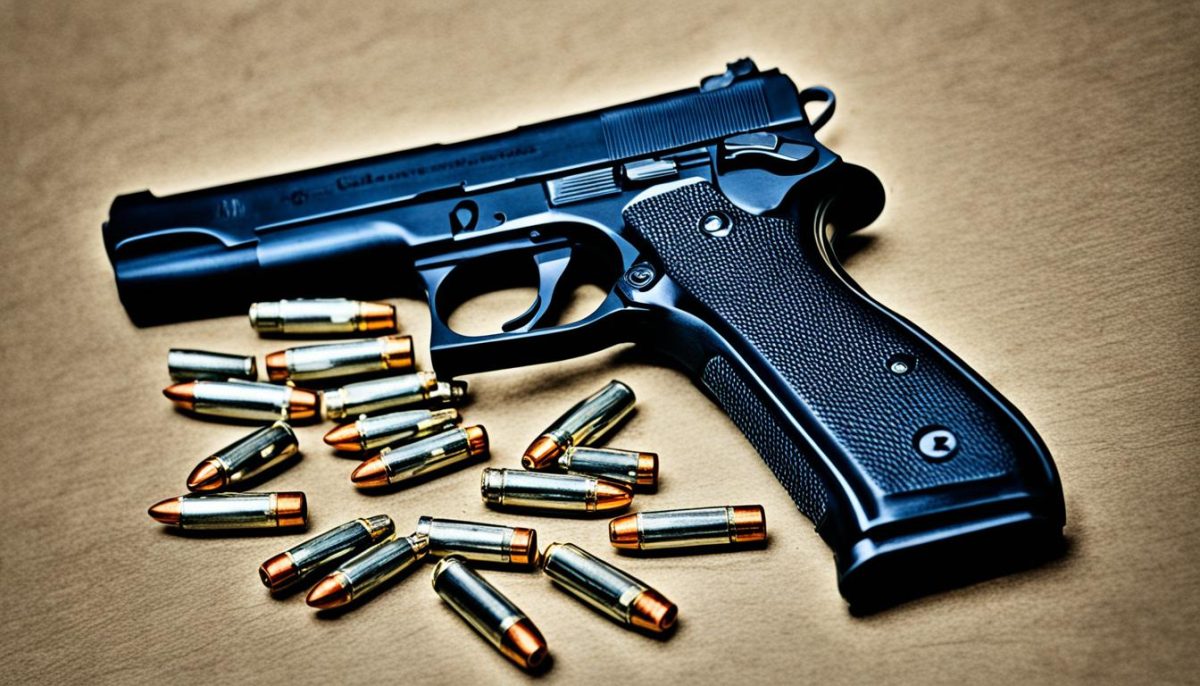When it comes to pistols, the number of bullets or rounds they can hold is a crucial factor that many gun enthusiasts and prospective buyers consider. In this article, we’ll dive into the typical bullet or ammunition capacity of different types of pistols, from compact revolvers to high-capacity semi-automatic handguns. We’ll also discuss the differences between standard and extended magazines, as well as the advantages and limitations of various pistol designs when it comes to the number of rounds they can accommodate.
Whether you’re a seasoned shooter or simply curious about the world of firearms, understanding the bullet capacity of pistols can provide valuable insights into their performance, versatility, and suitability for various applications. Join us as we explore this fascinating topic and help you make informed decisions when it comes to your firearm preferences.
Understanding Pistol Magazine Capacities
The number of bullets a pistol can hold is a crucial factor to consider when it comes to personal defense or target shooting. The capacity of a pistol’s magazine or cylinder directly impacts its firepower and utility. In this section, we’ll explore the differences between standard and extended magazines, as well as the unique considerations for revolvers and semi-automatic pistols.
Standard vs. Extended Magazines
Most semi-automatic handguns come equipped with standard magazines that typically hold between 10 to 15 rounds of ammunition. These standard magazine capacities are designed to strike a balance between firepower and concealability. However, for those seeking increased ammunition capacity, extended magazines are available that can hold 20 or more rounds.
The choice between standard and extended magazines often comes down to personal preference and the intended use of the firearm. Extended magazines can provide added peace of mind for self-defense situations, but they may also make the pistol less comfortable to carry and handle in everyday use.
Revolvers vs. Semi-Automatic Pistols
Unlike semi-automatic handguns, revolvers have a fixed cylinder that limits the number of rounds they can hold. Most revolver models accommodate between 5 to 6 bullets in their cylinder. This fixed capacity is a trade-off for the simplicity and reliability of the revolver design.
Semi-automatic pistols, on the other hand, utilize detachable magazines that allow for greater capacity. By swapping out magazines, semi-automatic handgun owners can quickly reload and maintain a higher ammunition count. This versatility makes semi-automatic pistols a popular choice for personal defense, target shooting, and military/law enforcement applications.
| Firearm Type | Typical Magazine/Cylinder Capacity |
|---|---|
| Semi-Automatic Pistol (Standard Magazine) | 10-15 rounds |
| Semi-Automatic Pistol (Extended Magazine) | 20+ rounds |
| Revolver | 5-6 rounds |
Understanding the magazine capacities and design differences between revolvers and semi-automatic pistols is essential for making informed decisions about personal defense, target shooting, and overall firearm selection.
How Many Bullets In A Pistol
When it comes to the number of bullets a pistol can hold, the specifics can vary widely depending on the make, model, and design of the firearm. While compact and subcompact pistols generally have lower capacities, often ranging from 6 to 12 rounds, full-size handguns can typically accommodate 15 to 17 rounds in their standard magazines. For those seeking even higher capacities, some high-capacity models may even exceed 20 rounds per magazine.
To better understand the average pistol bullet capacity, let’s take a closer look at some common handgun magazine sizes:
- Small/subcompact pistols: 6-12 rounds
- Mid-size/compact pistols: 10-15 rounds
- Full-size pistols: 15-17 rounds
- High-capacity models: 20+ rounds
It’s important to note that these numbers are just general guidelines, as the specific bullet capacity can vary between different makes and models of pistols. Ultimately, the number of rounds a pistol can hold is an important consideration for gun owners and enthusiasts alike.
“The specific number of bullets a pistol can hold varies widely depending on the make, model, and design of the firearm.”

While the average pistol bullet capacity can provide a helpful reference point, it’s crucial to always consult the manufacturer’s specifications or seek expert advice when determining the capabilities of a particular firearm.
Factors Affecting Bullet Capacity
When it comes to the bullet capacity of a pistol, several factors come into play. The size and design of the firearm itself can significantly impact the number of rounds it can hold. Compact and subcompact models tend to have lower capacities to maintain a smaller overall size, while full-size and competition pistols often boast higher magazine capacities.
Another crucial factor is the type of magazine used. The choice between standard and extended magazines can make a substantial difference in the ammunition capacity of a handgun. Extended magazines, as the name suggests, allow for more rounds to be loaded, giving the shooter greater firepower at their disposal.
Lastly, local laws and regulations can also influence the bullet capacity of a pistol. Some jurisdictions may impose restrictions on magazine size or the total number of rounds a firearm can hold. These legal considerations are important to keep in mind when selecting a handgun and its associated components.

